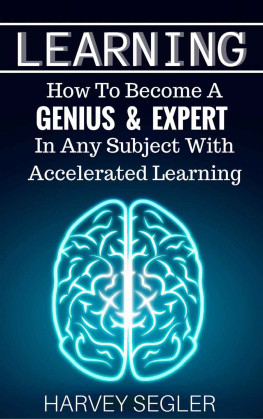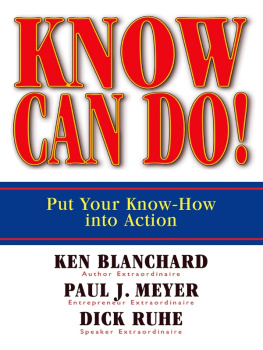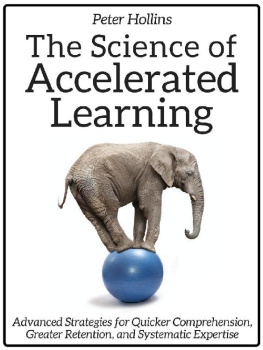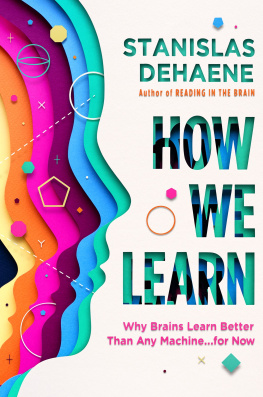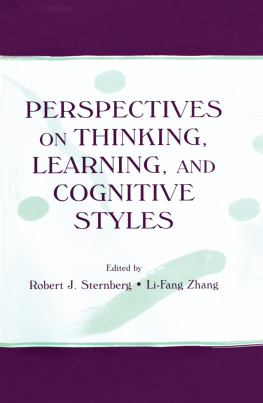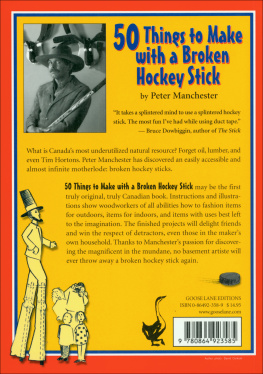Brown Peter C. - Make it stick: the science of successful learning
Here you can read online Brown Peter C. - Make it stick: the science of successful learning full text of the book (entire story) in english for free. Download pdf and epub, get meaning, cover and reviews about this ebook. City: Cambridge;Massachusetts, year: 2014, publisher: The Belknap Press of Harvard University Press, genre: Religion. Description of the work, (preface) as well as reviews are available. Best literature library LitArk.com created for fans of good reading and offers a wide selection of genres:
Romance novel
Science fiction
Adventure
Detective
Science
History
Home and family
Prose
Art
Politics
Computer
Non-fiction
Religion
Business
Children
Humor
Choose a favorite category and find really read worthwhile books. Enjoy immersion in the world of imagination, feel the emotions of the characters or learn something new for yourself, make an fascinating discovery.

- Book:Make it stick: the science of successful learning
- Author:
- Publisher:The Belknap Press of Harvard University Press
- Genre:
- Year:2014
- City:Cambridge;Massachusetts
- Rating:4 / 5
- Favourites:Add to favourites
- Your mark:
- 80
- 1
- 2
- 3
- 4
- 5
Make it stick: the science of successful learning: summary, description and annotation
We offer to read an annotation, description, summary or preface (depends on what the author of the book "Make it stick: the science of successful learning" wrote himself). If you haven't found the necessary information about the book — write in the comments, we will try to find it.
Make it stick: the science of successful learning — read online for free the complete book (whole text) full work
Below is the text of the book, divided by pages. System saving the place of the last page read, allows you to conveniently read the book "Make it stick: the science of successful learning" online for free, without having to search again every time where you left off. Put a bookmark, and you can go to the page where you finished reading at any time.
Font size:
Interval:
Bookmark:
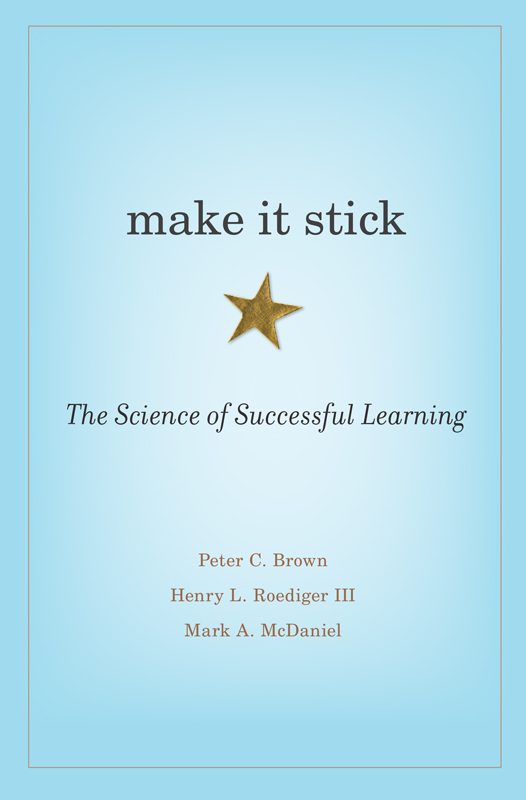
MAKE IT STICK
make it stick
The Science of Successful Learning
Peter C. Brown
Henry L. Roediger III
Mark A. McDaniel
THE BELKNAP PRESS of HARVARD UNIVERSITY PRESS
Cambridge, Massachusetts
London, England
2014
Copyright 2014 by Peter C. Brown, Henry L. Roediger III, Mark A. McDaniel
ALL RIGHTS RESERVED
Jacket image: Thinkstock
Jacket design: Lisa Roberts
The Library of Congress has cataloged the printed edition as follows:
Brown, Peter C.
Make it stick : the science of successful learning / Peter C. Brown, Henry L. Roediger, Mark A. McDaniel.
pages cm
Includes bibliographical references and index.
ISBN 978-0-674-72901-8
1. LearningResearch. 2. CognitionResearch. 3. Study skills. I. Title.
LB1060.B768 2014
370.15'23dc23
2013038420
Memory is the mother of all wisdom.
Aeschylus
Prometheus Bound
Contents
PEOPLE GENERALLY ARE going about learning in the wrong ways. Empirical research into how we learn and remember shows that much of what we take for gospel about how to learn turns out to be largely wasted effort. Even college and medical studentswhose main job is learningrely on study techniques that are far from optimal. At the same time, this field of research, which goes back 125 years but has been particularly fruitful in recent years, has yielded a body of insights that constitute a growing science of learning: highly effective, evidence-based strategies to replace less effective but widely accepted practices that are rooted in theory, lore, and intuition. But theres a catch: the most effective learning strategies are not intuitive.
Two of us, Henry Roediger and Mark McDaniel, are cognitive scientists who have dedicated our careers to the study of learning and memory. Peter Brown is a storyteller. We have teamed up to explain how learning and memory work, and we do this less by reciting the research than by telling stories of people who have found their way to mastery of complex knowledge and skills. Through these examples we illuminate the principles of learning that the research shows are highly effective. This book arose in part from a collaboration among eleven cognitive psychologists. In 2002, the James S. McDonnell Foundation of St. Louis, Missouri, in an effort to better bridge the gap between basic knowledge on learning in cognitive psychology and its application in education, awarded a research grant Applying Cognitive Psychology to Enhance Educational Practice to Roediger and McDaniel and nine others, with Roediger as the principal investigator. The team collaborated for ten years on research to translate cognitive science into educational science, and in many respects this book is a direct result of that work. The researchers and many of their studies are cited in the book, the notes, and our acknowledgments. Roedigers and McDaniels work is also supported by several other funders, and McDaniel is the co-director of Washington Universitys Center for Integrative Research in Learning and Memory.
Most books deal with topics seriallythey cover one topic, move on to the next, and so on. We follow this strategy in the sense that each chapter addresses new topics, but we also apply two of the primary learning principles in the book: spaced repetition of key ideas, and the interleaving of different but related topics. If learners spread out their study of a topic, returning to it periodically over time, they remember it better. Similarly, if they interleave the study of different topics, they learn each better than if they had studied them one at a time in sequence. Thus we unabashedly cover key ideas more than once, repeating principles in different contexts across the book. The reader will remember them better and use them more effectively as a result.
This is a book about what people can do for themselves right now in order to learn better and remember longer. The responsibility for learning rests with every individual. Teachers and coaches, too, can be more effective right now by helping students understand these principles and by designing them into the learning experience. This is not a book about how education policy or the school system ought to be reformed. Clearly, though, there are policy implications. For example, college professors at the forefront of applying these strategies in the classroom have experimented with their potential for narrowing the achievement gap in the sciences, and the results of those studies are eye opening.
We write for students and teachers, of course, and for all readers for whom effective learning is a high priority: for trainers in business, industry, and the military; for leaders of professional associations offering in-service training to their members; and for coaches. We also write for lifelong learners nearing middle age or older who want to hone their skills so as to stay in the game.
While much remains to be known about learning and its neural underpinnings, a large body of research has yielded principles and practical strategies that can be put to work immediately, at no cost, and to great effect.
EARLY IN HIS CAREER as a pilot, Matt Brown was flying a twin-engine Cessna northeast out of Harlingen, Texas, when he noticed a drop in oil pressure in his right engine. He was alone, flying through the night at eleven thousand feet, making a hotshot freight run to a plant in Kentucky that had shut down its manufacturing line awaiting product parts for assembly.
He reduced altitude and kept an eye on the oil gauge, hoping to fly as far as a planned fuel stop in Louisiana, where he could service the plane, but the pressure kept falling. Matt has been messing around with piston engines since he was old enough to hold a wrench, and he knew he had a problem. He ran a mental checklist, figuring his options. If he let the oil pressure get too low he risked the engines seizing up. How much further could he fly before shutting it down? What would happen when he did? Hed lose lift on the right side, but could he stay aloft? He reviewed the tolerances hed memorized for the Cessna 401. Loaded, the best you could do on one engine was slow your descent. But he had a light load, and hed burned through most of his fuel. So he shut down the ailing right engine, feathered the prop to reduce drag, increased power on the left, flew with opposite rudder, and limped another ten miles toward his intended stop. There, he made his approach in a wide left-hand turn, for the simple but critical reason that without power on his right side it was only from a left-hand turn that he still had the lift needed to level out for a touchdown.
While we dont need to understand each of the actions Matt took, he certainly needed to, and his ability to work himself out of a jam illustrates what we mean in this book when we talk about learning: we mean acquiring knowledge and skills and having them readily available from memory so you can make sense of future problems and opportunities.
There are some immutable aspects of learning that we can probably all agree on:
First, to be useful, learning requires memory, so what weve learned is still there later when we need it.
Second, we need to keep learning and remembering all our lives. We cant advance through middle school without some mastery of language arts, math, science, and social studies. Getting ahead at work takes mastery of job skills and difficult colleagues. In retirement, we pick up new interests. In our dotage, we move into simpler housing while were still able to adapt. If youre good at learning, you have an advantage in life.
Third, learning is an acquired skill, and the most effective strategies are often counterintuitive.
Font size:
Interval:
Bookmark:
Similar books «Make it stick: the science of successful learning»
Look at similar books to Make it stick: the science of successful learning. We have selected literature similar in name and meaning in the hope of providing readers with more options to find new, interesting, not yet read works.
Discussion, reviews of the book Make it stick: the science of successful learning and just readers' own opinions. Leave your comments, write what you think about the work, its meaning or the main characters. Specify what exactly you liked and what you didn't like, and why you think so.

